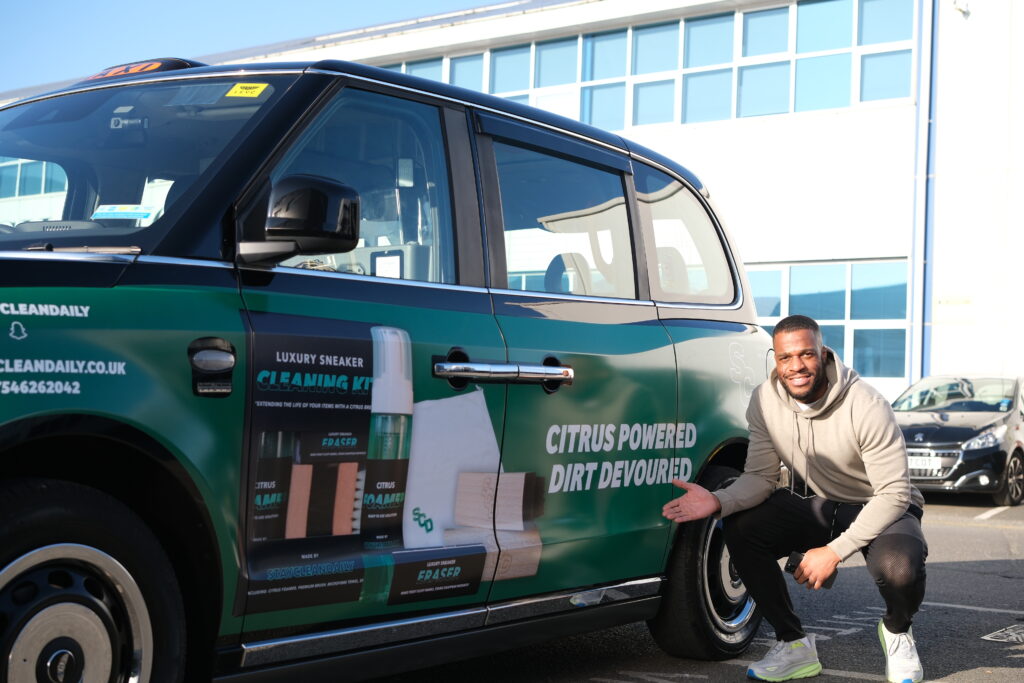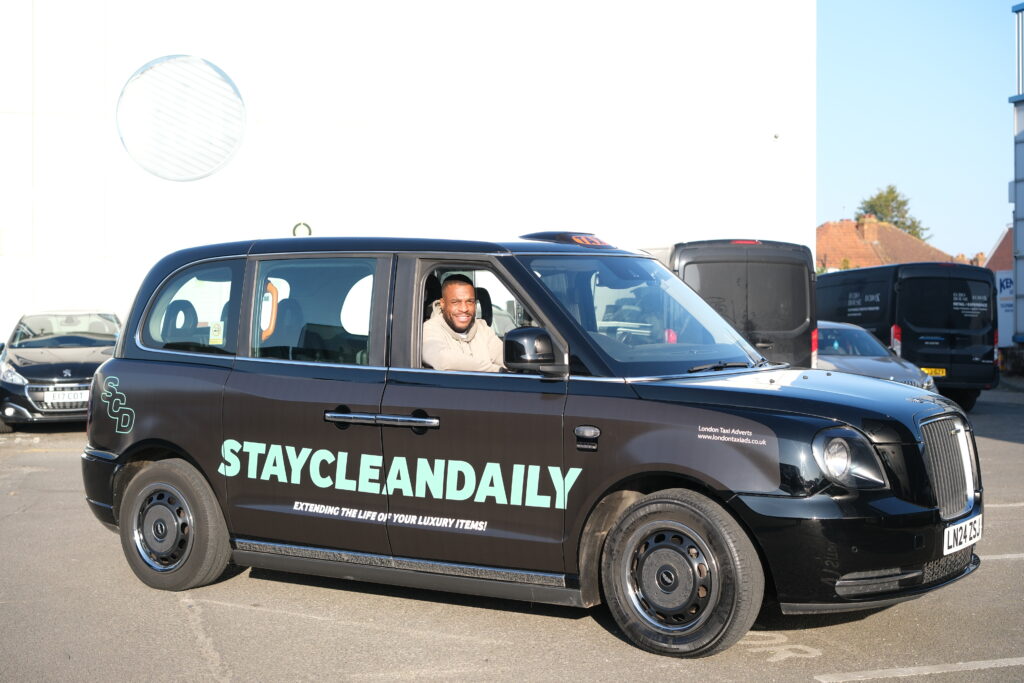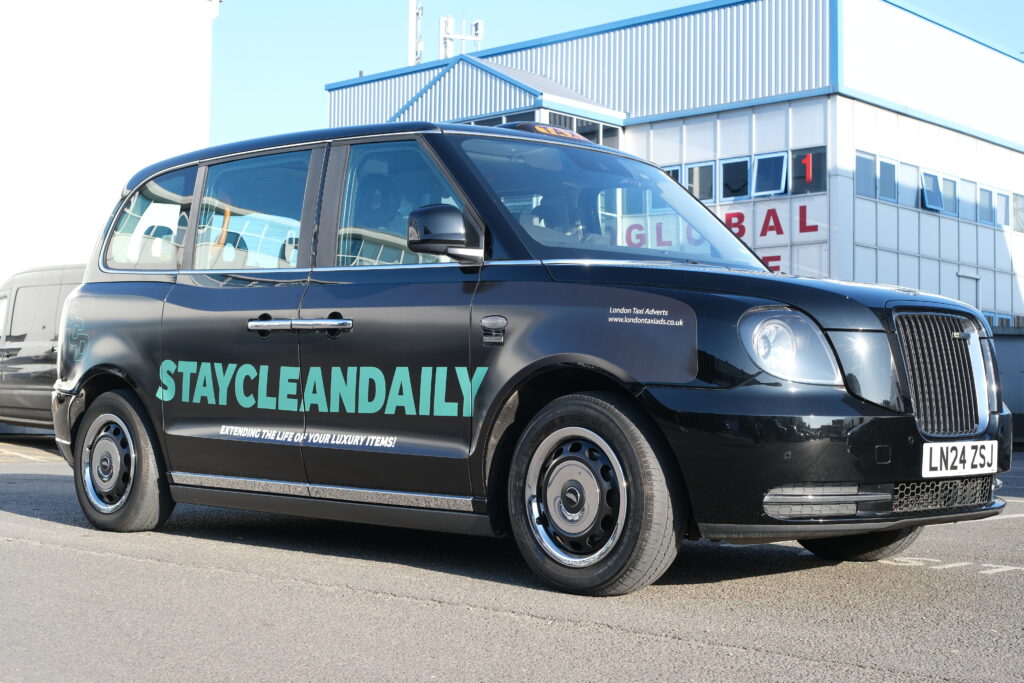Dominated by algorithm-chasing and short-lived viral moments, something unexpected is quietly stealing the spotlight on London’s streets: taxi advertising. While digital media budgets balloon and attention spans shrink across screens, the humble London taxi is one of the most reliable branding vehicles, both literally and figuratively.
Consider this: London taxi advertising has surged by 35% over the past two years, even as digital CPMs climbed a steep 60%. This resurgence isn’t rooted in nostalgia or aesthetic charm. Marketers are realising that while digital impressions are easy to buy, they’re even easier to ignore. In contrast, taxi adverts guarantee physical, unavoidable presence in the real world, where consumers actually live, work, and make purchase decisions.
What’s fueling this return to the streets? Below, we unpack the strategic advantages of taxi advertising in a hyperconnected age and explore why more brands are shifting gears to embrace this high-impact medium.
The Digital Advertising Paradox: Why More Isn’t Always Better?

1. The Promise vs. the Reality
Digital advertising entered the scene with bold promises: precise targeting, scalable reach, and unmatched efficiency. Instead, it has delivered a fragmented landscape riddled with fraud, rising costs, and diminishing returns. Today, the average London brand manager juggles campaigns across 8 to 12 platforms, each governed by its algorithm, limited targeting capabilities, and murky performance metrics.
2. Digital Fatigue Is Real
This overload has led to what many call “digital fatigue syndrome.” Consumers are exposed to more than 3,000 digital ads daily, prompting widespread ad blindness and avoidance. In London alone, 40% of internet users deploy ad-blocking tools. Meanwhile, evolving privacy regulations have stripped away the hyper-targeting capabilities that once justified digital’s soaring costs.
3. The Collapse of Attention
The attention economy has fundamentally shifted. Social media feeds now move faster than a swipe, shrinking ad exposure to mere milliseconds. Display ads have a viewability rate of just 50%, and video completion rates have fallen to 30%, as users increasingly scroll past or skip content before it lands.
4. Skyrocketing Costs, Shrinking ROI
Yet, brands are paying more than ever. Over the past three years, Facebook ad costs have surged 89%, while Google Ads rose by 73%. Marketers are spending more to reach audiences that are becoming harder to find and engage.
5. Taxi Advertising: Built for the Real World
Taxi advertising sidesteps these pitfalls. It’s immune to ad-blockers, privacy filters, and algorithmic chaos. Unlike digital channels that fight for shrinking attention in cluttered feeds, taxi ads offer guaranteed real-world visibility. Their presence isn’t dependent on cookies or click-through rates.
6. Mobility as a Strategic Advantage
In London’s urban maze, this mobility is a strategic advantage. Unlike static billboards that fade into the background, London taxi advertising moves with its audience, weaving through high-traffic zones, business districts, shopping areas, and nightlife hubs. Brands gain repeated, organic exposure that blends into daily routines.
The Science of Physical Advertising: Why Taxi Ads Still Work?

Understanding why taxi advertising remains so effective requires a closer look at how human attention and memory function in physical environments. Unlike digital platforms, real-world settings offer passive exposure that bypasses mental filters and ad fatigue. Consumers encounter taxi ads naturally, without needing to opt in or click through.
1. The Neuroscience Behind Physical Ads
Recent research in neuroscience shows that physical advertisements activate different areas of the brain than digital content. While digital ads rely on short bursts of engagement, physical formats engage spatial memory, building stronger and more lasting neural connections. The three-dimensional structure of taxi advertising, combined with motion and real-world context, triggers depth perception and tracking systems that screens simply can’t replicate.
2. Why Movement Matters
The movement of a London taxi adds another layer of power. Human brains are hardwired to notice moving objects. This instinct makes moving taxi ads naturally attention-grabbing, even when consumers aren’t actively looking for brand messages. Involuntary attention capture gives taxi ads a clear edge over digital formats that require active interaction to be effective.
3. Context Is Everything
Taxi adverts appear where decisions are made on high streets, near restaurants, outside concert venues, in shopping hubs. This location-based exposure makes messaging more relevant and actionable. A fashion label on a taxi passing through Oxford Street or a restaurant ad circling Soho creates a direct and meaningful connection with a potential customer in the moment.
4. Focused Attention Without Distractions
In contrast to chaotic digital feeds, taxi advertising enjoys a cleaner, more focused setting. Digital ads are squeezed between cat videos, news headlines, and influencer content, leading to fragmented and shallow attention. Taxi ads reach consumers during natural pauses in traffic, at lights, or while walking along the street.
5. Longer Exposure, Better Engagement
The difference in attention span is significant. Digital ads are lucky to get 1 to 3 seconds. Taxi advertising often enjoys 30 to 60 seconds of visibility during traffic encounters. This additional time allows for richer storytelling, emotional resonance, and better message absorption.
Inside the cab, the advantage grows further. Passengers spend 15 to 20 minutes per ride, creating a prime window for detailed brand narratives, product education, or calls to action. These more prolonged interactions are perfect for campaigns that require more consideration or explanation.
How Taxi Ads Enhance Memory and Recall?
Taxi advertising is about memorability. These ads create strong spatial memory associations by combining visuals with physical location cues. People remember the brand and where they saw it, improving contextual recall.
The results are measurable. Studies indicate that taxi advertising generates 65% higher unaided brand recall than digital ads. The mix of mobility, location, repetition, and passive exposure forms powerful memories that stay with the consumer long after the journey ends.
Digital ads require mental effort: skip, scroll, click, judge. Taxi ads ask for nothing. This lack of demand on cognitive resources means the message is received without resistance, creating a low-friction pathway into long-term memory.
Strategic Advantages: Why Smart Brands Choose Taxi Advertising?

In a saturated and increasingly unpredictable media landscape, taxi advertising offers brands more than just exposure. It delivers a strategic edge, addressing core marketing challenges like fragmented reach, low attention retention, rising digital costs, and consumer trust deficits. From precision targeting to credible delivery, smart brands are leaning into the power of London taxi advertising to meet business goals efficiently and effectively.
1. Hyperlocal Targeting with Real-World Accuracy
Unlike digital geofencing, which depends on imprecise signals and user behaviour, London taxi advertising enables pinpoint geographic targeting through strategic route planning. Brands can direct their message into specific boroughs, districts, and high-value zones, not just by algorithm, but by physical presence.
Luxury brands often flood taxis in areas like Mayfair and Knightsbridge to reach affluent clientele. Tech startups zero in on Shoreditch and King’s Cross, hubs of creativity and innovation. Restaurant chains hyper-target neighbourhoods tied to their delivery radius or dine-in locations. This street-level precision ensures ads appear where they’re most likely to convert.
Time-of-day targeting adds further sophistication. Morning rush hours hit professionals on their way to work, while evenings and weekends align with leisure audiences and family outings. Taxi routes can be adapted to tap into specific audience routines, turning every hour into an opportunity.
2. 100% Guaranteed Viewability
One of taxi advertising’s greatest strengths is what digital still struggles to offer: certainty of visibility. Every taxi ad is fully visible to pedestrians, motorists, and passengers. There are no skipped views, blocked impressions, or bots inflating numbers.
In a city where 40% of internet users deploy ad blockers, taxis remain one of the few ad formats with unfiltered access to real people. Privacy settings, cookie preferences, or algorithm changes don’t affect this medium. Plus, weather and urban layout challenges rarely affect taxis, which move fluidly through the city and adapt to footfall hotspots organically.
3. More Value, Lower Spend: Cost Efficiency and ROI
While digital platforms increase cost and decrease performance, taxi advertising remains a cost-effective channel with long-lasting impact. London-based campaigns report 25% to 40% lower customer acquisition costs than Facebook and Google.
The extended exposure that comes from daily taxi routes, combined with higher brand recall and repeated encounters, translates into better long-term ROI. Digital ads vanish in a second. Taxi ads stay visible across multiple neighbourhoods for weeks or months, reinforcing brand memory with each sighting.
Brands also benefit from campaign flexibility. Re routes, timings, and messaging adjustments can be made mid-flight based on performance data. Volume packages and extended runtimes reduce per-impression costs and improve media efficiency.
4. A Credibility Boost That Digital Can’t Buy
There’s a prestige associated with advertising on London’s black cabs. Consumers perceive brands on taxis as established, successful, and invested in their visibility, unlike many of their purely digital competitors.
For newer brands entering competitive markets or launching product lines, this credibility halo is a powerful differentiator. It helps build consumer confidence and establish early trust. Internally, the format’s immunity to fraud. Unlike digital bot traffic and click farms. It adds another layer of value for marketing teams focused on transparency and real human impact.
The Future Belongs to Integrated Advertising

Taxi advertising’s ongoing relevance is proof that real-world visibility still matters. While digital platforms grow more expensive and less engaging, taxi campaigns deliver consistent results through guaranteed viewability. The strongest marketing strategies don’t rely on one channel alone. Instead, they combine physical presence with digital precision to maximise reach, reinforce messaging, and drive conversions.
As London’s streets become increasingly valuable media spaces, forward-thinking brands are turning to taxi advertising for its unique ability to engage people where decisions are made in the real world. When aligned with digital efforts, it amplifies both awareness and performance across the funnel.
FAQs
1. Are taxi ads effective in today’s digital-first marketplace?
Yes, taxi ads cut through digital clutter with 65% higher recall and 40% stronger memory impact. They offer guaranteed, distraction-free visibility and are free from ad-blockers and algorithms.
2. What are the specific benefits of taxi advertising for modern brands?
Taxi advertising offers 100% viewability, precise geographic targeting, lower acquisition costs, and fraud-free reach. It enhances brand trust, delivers extended exposure, and drives real-world engagement through QR codes and contextual relevance.
